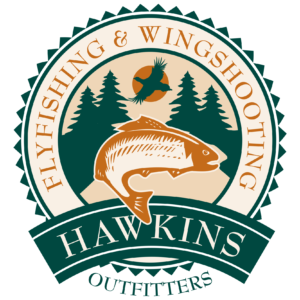
Hexes at night
Hexes and other big bugs!
Manistee River trout fishing is some of the finest dry fly fishing that can be found in the Midwest. Trout can be taken on the surface regularly between April and October but Manistee River dry fly trout fishing really rocks when the big flies are hatching. Hexes, Drakes, and Isonychia mayflies provide Michigan fly-fishing anglers, some of the finest dry fly fishing to be found anywhere.
Drakes are important
For literary purposes I’m lumping together Gray and Brown Drakes, the awesome Isonychia, the mighty Hexes, and the lesser known Golden, Yellow and Green Drakes. These are the biggest bugs of the year from a size 12 to a size 6; these super-sized mayflies bring big, wary, brown trout to the surface to feed. That’s the good news. From there it gets a little more complicated. You need to know the habits and habitat of these bugs to be a successful “Manistee River Drake Angler”.
Habitat
The most numerous and famous of these mayflies are the Brown Drakes and the Hexes. Like the Green, Yellow and Golden Drakes, the Hex and the Brown Drake are all burrowing nymphs that live in the mucky areas of the river. So your first step is to locate those slower stretches of river where the muck is.
Preparation
Second step is to look for those areas with enough cover to hold big fish. Thirdly, figure out the drifts, ingress and egress from the river, and where to fight a large fish before it gets dark. When it’s dark out and big fish are smashing mayflies you need  to know these things to be both safe and successful. All of these mayflies hatch and spin at, or after dark so you need to be in the river looking for them well before dark. Be prepared to fish duns and spinners, many times they will both be on the water during the evening. To see an example of this watch some Hexagenia Video.
to know these things to be both safe and successful. All of these mayflies hatch and spin at, or after dark so you need to be in the river looking for them well before dark. Be prepared to fish duns and spinners, many times they will both be on the water during the evening. To see an example of this watch some Hexagenia Video.
How to fish Hexes and Brown Drakes
You are going to be fishing to large fish at or after dark. A couple of tips to help you be successful. First use a short leader to help you control the drift. I use a 6 foot, 2X leader for the hex hatch or spinner fall. Secondly, wade as close to the fish as you can. The most common reason for failure is drag on the fly because you can’t see to mend correctly. If you can get close enough to high stick you will be dead drift.
Identification
Identifying Brown Drakes and Hexes is easy, Brown Drakes have 3 tails and Hexes have 2. Both bugs have a yellowish cast to them with Brown Drakes a size 10 and hex a size 8 or 6. Because of the size of the hook patterns for both flies usually incorporate lots of buoyant material. Be careful of the heavily dressed “tourist hexes”. The trout usually won’t touch an overly dressed fly after a couple of days into the hatch.
Grey Drakes
Gray Drakes live in opposite habitat. Look for Gray Drake Spinner clouds over riffles at dark. Gray Drakes are maybe the easiest bugs to identify; they are a size 12 mayfly with a white stripe around the head and eyes. Tie them with a very narrow, slight body. They are the skinniest of the bunch.
Isonychia!
Manistee River trout fishermen have arguably the best bug available for imitation by a fly angler. It is the Isonychia, also known as the White Glove Howdy due to its cream colored forelegs. The Isonychia is a free swimming nymph that sometimes crawls out of the water to hatch and other times you will see them hatching in the water. When it hatches it’s gray like an Adams and when it spins it’s mahogany colored. The Isonychia is one of those bugs that trout just love to eat. It must taste good! Isonychias spin just before dark. I’ve never seen a good Iso spinner fall that didn’t get the big fish up and eating. Look for Iso’s all of June and well into July in areas of heavy gravel. They like to deposit their eggs in the riffles. Isonychia nymphs can be fished very successfully by actively swimming the nymph into log jams and other heavy cover and stripping them out. Hang on, trout love these big bugs.
Conclusion
Hawkins Guides are experts, we know where to find Hexes and other big bugs. If your interested in seeing them and going after the trout that like to eat them, give us a call. You can reach us at 231-228-7135 or email Chuck directly at [email protected]. You can also reach one of our guides by using our contact page.




